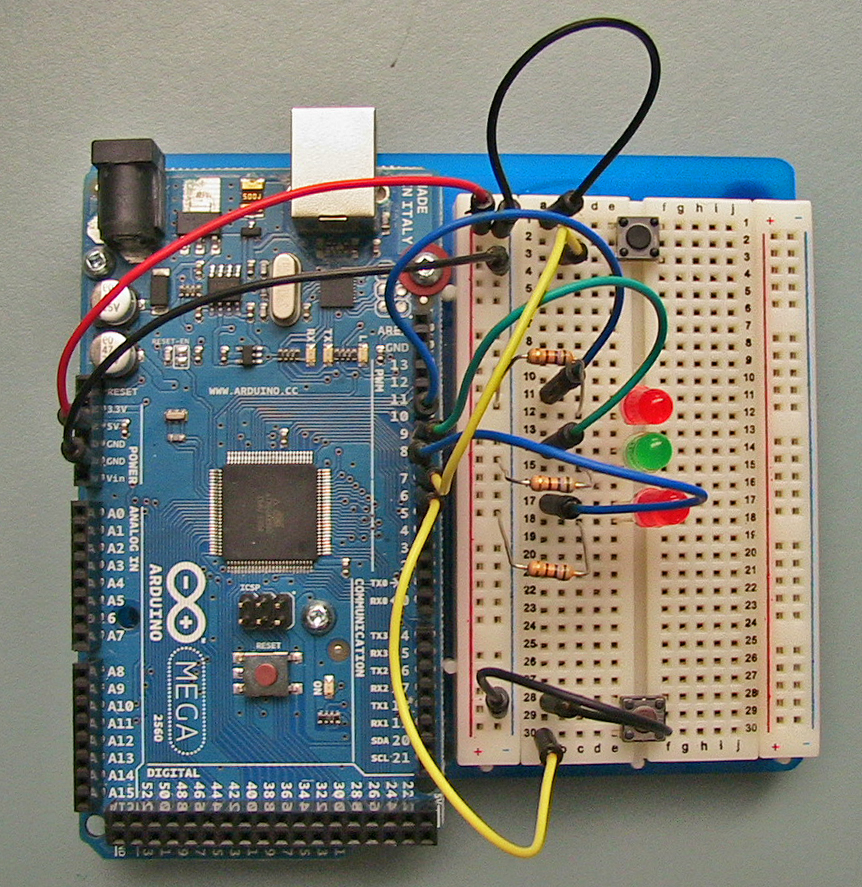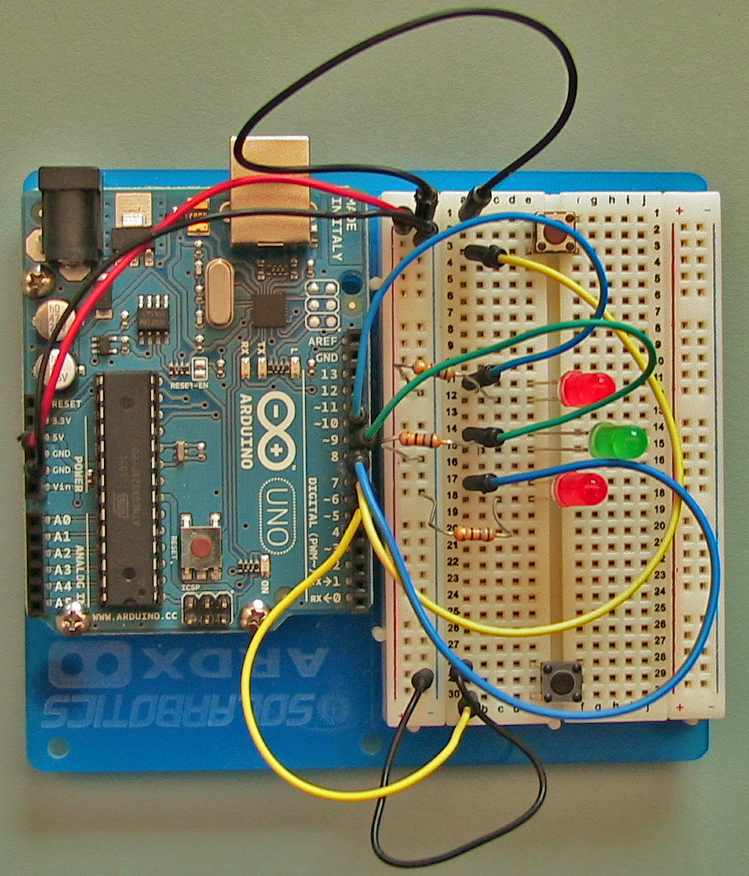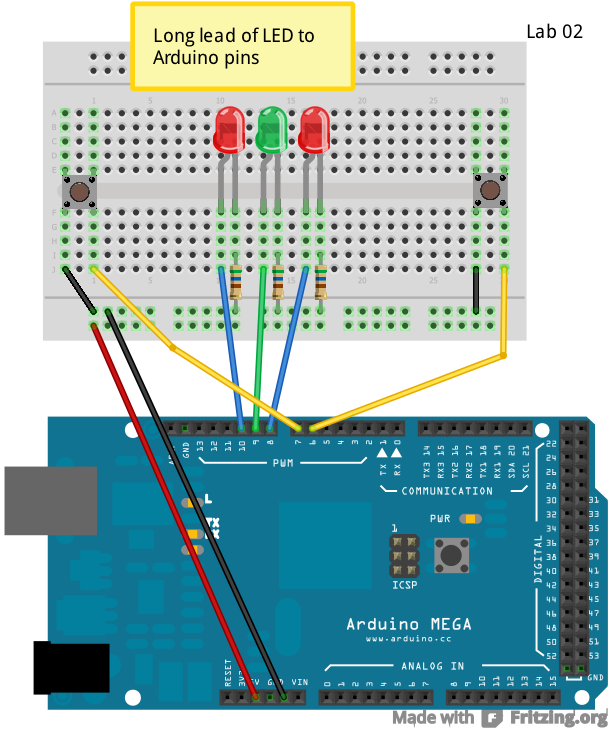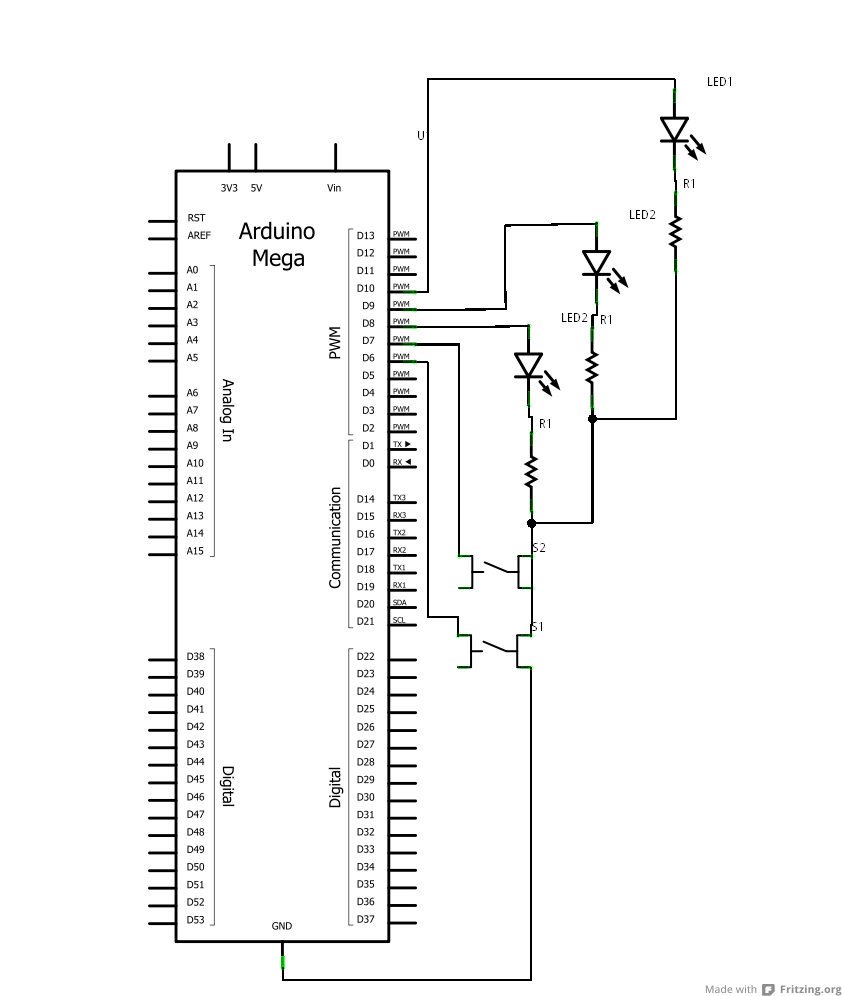/* Tug of war game: |
|
Two players, Player 1 and Player 2, are at a |
board consisting of 2 push buttons and 3 LEDS |
|
There are 3 LEDs |
RED1 GRN RED2 |
and 2 buttons |
B1 B2 |
|
The objective is to push your button faster than your opponent |
so that when time runs out you have the rope on your side. |
|
Whoever has pushed their button the most times will be |
winning, and their red LED will turn on. If the two buttons |
are within Threshold of each other, then the players are |
currently tied, and the green LED will be on. |
|
*/ |
int P1LEDLowPin = 10; |
int P2LEDLowPin = 8; |
int LEDEvenPin = 9; |
|
int P1ButtonPin = 7; |
int P2ButtonPin = 6; |
|
void setup() { |
// configure LED pins to be a digital outputs |
pinMode(P1LEDLowPin, OUTPUT); |
pinMode(P2LEDLowPin, OUTPUT); |
pinMode(LEDEvenPin, OUTPUT); |
|
// set button pins to INPUT and |
// turn on internal pull up resistor |
pinMode(P1ButtonPin, INPUT); |
digitalWrite(P1ButtonPin, HIGH); |
pinMode(P2ButtonPin, INPUT); |
digitalWrite(P2ButtonPin, HIGH); |
} |
|
/* PushCount is incremented when player 1 pushes their |
button, and decremented when player 2 pushes their |
button. So if it is > 0 player 1 has made more pushes |
and if it is < 0 player 2 has made more pushes. |
*/ |
|
int PushCount = 0; |
|
/* PushCount has to be Threshold far away from zero before a |
player is considered to be winning. |
*/ |
|
int Threshold = 5; |
|
void loop() { |
if ( digitalRead(P1ButtonPin) == LOW ) { |
PushCount++; |
} |
if ( digitalRead(P2ButtonPin) == LOW ) { |
PushCount--; |
} |
|
if ( PushCount > Threshold ) { |
digitalWrite(P1LEDLowPin, HIGH); |
digitalWrite(P2LEDLowPin, LOW); |
digitalWrite(LEDEvenPin, LOW); |
} else if ( PushCount < (0-Threshold) ) { |
digitalWrite(P1LEDLowPin, LOW); |
digitalWrite(P2LEDLowPin, HIGH); |
digitalWrite(LEDEvenPin, LOW); |
} else { |
digitalWrite(P1LEDLowPin, LOW); |
digitalWrite(P2LEDLowPin, LOW); |
digitalWrite(LEDEvenPin, HIGH); |
} |
|
// wait 50 mS for any button bounce to die out |
delay(50); |
} |
|





